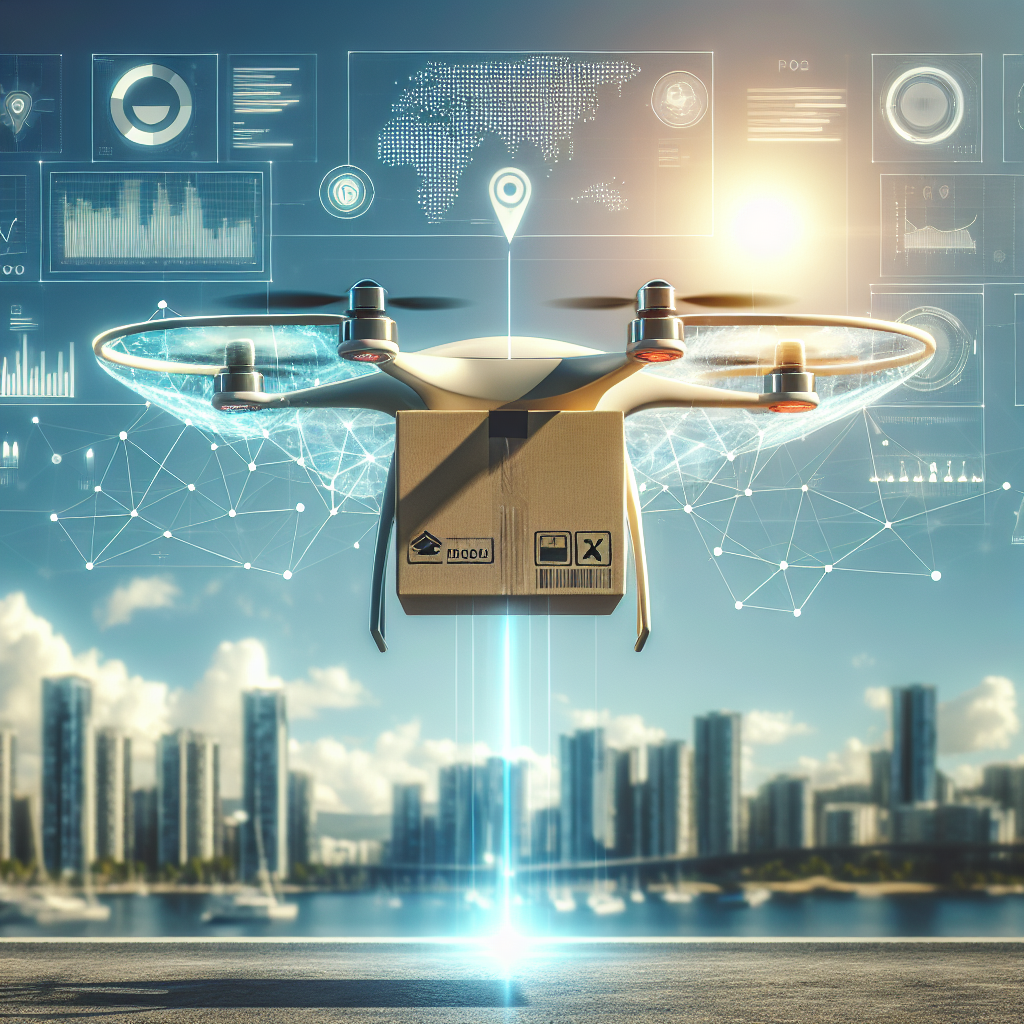The Rise of AI-Powered Drones in Transportation and Logistics
In recent years, the use of drones in transportation and logistics has been on the rise, with many companies leveraging their capabilities to streamline operations and improve efficiency. One of the key drivers behind this trend is the integration of artificial intelligence (AI) technology into drones, allowing them to perform a wide range of tasks autonomously and with greater precision.
AI-powered drones are revolutionizing the way goods are transported, monitored, and delivered, offering a cost-effective and efficient alternative to traditional methods. From inventory management to last-mile delivery, these drones are reshaping the logistics industry and opening up new possibilities for businesses of all sizes.
In this article, we will explore the rise of AI-powered drones in transportation and logistics, the key benefits they offer, and the challenges they face. We will also discuss some frequently asked questions about this emerging technology.
Benefits of AI-Powered Drones in Transportation and Logistics
There are several key benefits to using AI-powered drones in transportation and logistics, including:
1. Efficiency: AI-powered drones can perform tasks faster and more accurately than humans, leading to improved efficiency in operations. They can navigate through complex environments, avoid obstacles, and deliver goods with precision, reducing the time and manpower required for logistics tasks.
2. Cost-effectiveness: Drones are a cost-effective solution for transportation and logistics, as they require minimal human intervention and can operate 24/7. By using AI technology, drones can optimize routes, reduce fuel consumption, and cut down on operational costs, making them a cost-effective alternative to traditional transportation methods.
3. Safety: AI-powered drones are equipped with advanced sensors and cameras that allow them to navigate safely and avoid collisions. They can also monitor the condition of goods during transport, ensuring that they arrive at their destination intact. This improves safety for both the drone operators and the recipients of the goods.
4. Scalability: Drones can be easily scaled up or down to meet the demands of a business, making them a flexible solution for transportation and logistics. Whether a company needs to transport small parcels or large cargo, drones can be customized to meet their specific requirements.
Challenges of AI-Powered Drones in Transportation and Logistics
While AI-powered drones offer many benefits, there are also challenges that need to be addressed before they can be widely adopted in the transportation and logistics industry. Some of the key challenges include:
1. Regulation: One of the main challenges facing AI-powered drones is the lack of clear regulations governing their use. Many countries have strict regulations in place that restrict the use of drones for commercial purposes, making it difficult for businesses to leverage this technology. As a result, companies must navigate a complex regulatory landscape to ensure compliance with local laws.
2. Security: AI-powered drones are vulnerable to cyber-attacks and hacking, which could compromise the safety and security of the goods they are transporting. Companies must implement robust security measures to protect their drones from unauthorized access and ensure the integrity of their operations.
3. Public Perception: Drones have raised concerns about privacy and safety among the general public, leading to resistance to their widespread adoption. Companies must address these concerns through education and transparency to build trust and acceptance of AI-powered drones in transportation and logistics.
4. Limited Range and Payload Capacity: While drones have the potential to revolutionize transportation and logistics, they are currently limited by their range and payload capacity. Most drones have a limited range of a few miles and can only carry small payloads, making them unsuitable for long-distance or heavy cargo transport. Companies must develop new technologies to overcome these limitations and unlock the full potential of AI-powered drones.
Frequently Asked Questions about AI-Powered Drones in Transportation and Logistics
Q: How are AI-powered drones different from traditional drones?
A: AI-powered drones are equipped with artificial intelligence technology that allows them to perform tasks autonomously and with greater precision. Traditional drones rely on manual control and navigation, making them less efficient and accurate than AI-powered drones.
Q: What are some common use cases for AI-powered drones in transportation and logistics?
A: AI-powered drones are used for a wide range of tasks in transportation and logistics, including inventory management, monitoring of goods in transit, last-mile delivery, and surveillance of transportation networks. They can also be used for disaster relief, search and rescue operations, and environmental monitoring.
Q: How can businesses benefit from using AI-powered drones in transportation and logistics?
A: Businesses can benefit from using AI-powered drones in transportation and logistics by improving efficiency, reducing costs, enhancing safety, and increasing scalability. Drones can help companies streamline their operations, optimize routes, and deliver goods faster and more accurately than traditional methods.
Q: What are some of the challenges facing the adoption of AI-powered drones in transportation and logistics?
A: Some of the key challenges facing the adoption of AI-powered drones in transportation and logistics include regulation, security, public perception, and limited range and payload capacity. Companies must overcome these challenges to realize the full potential of this technology in the industry.
In conclusion, AI-powered drones are transforming the transportation and logistics industry by offering a cost-effective and efficient alternative to traditional methods. While there are challenges that need to be addressed, the benefits of using AI-powered drones are clear, and companies that embrace this technology stand to gain a competitive advantage in the market. With continued advancements in AI and drone technology, we can expect to see even greater innovation and adoption of drones in transportation and logistics in the coming years.

